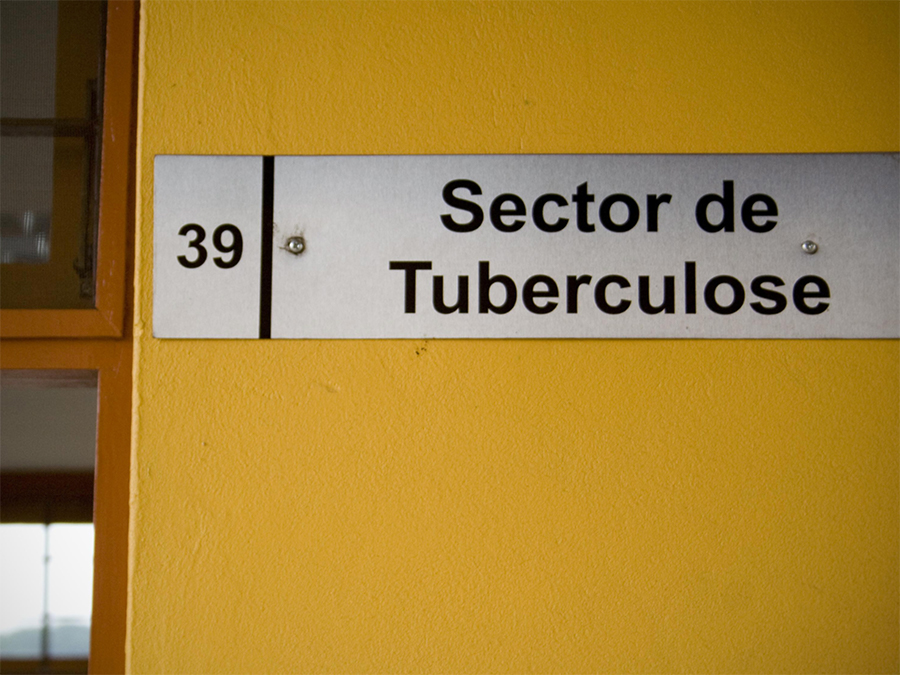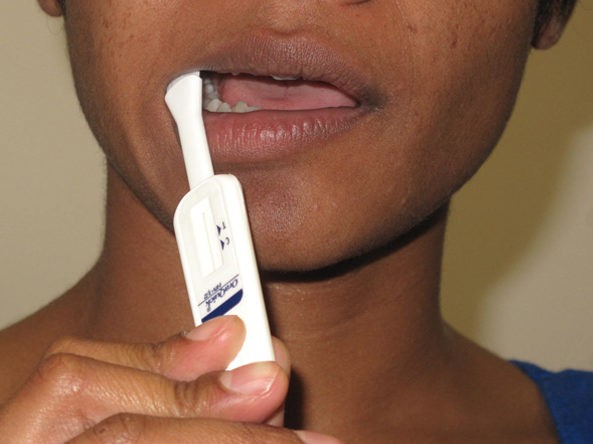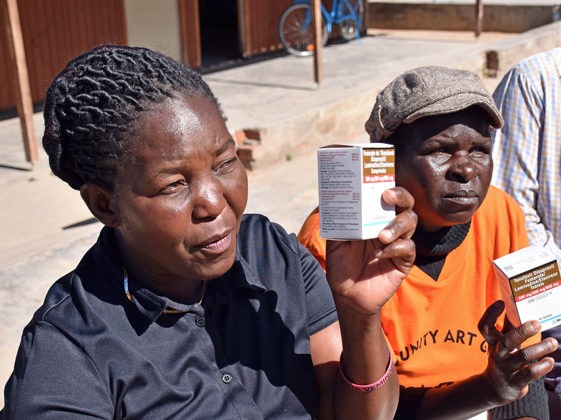Article and Study Summary:
A 24-week, All-Oral Regimen for Rifampin-Resistant Tuberculosis
Published in:
N Engl J Med. 2022;387(25):2331-2343.
https://www.nejm.org/doi/full/10.1056/NEJMoa2117166
Authors:
Nyang’wa B, Berry C, Kazounis E, et al.
Summary
This open-label, phase 2–3, randomized, noninferiority trial compared the safety and efficacy of 24-week, all-oral regimens to the 9-to-20-month standard-care treatment for rifampin-resistant pulmonary tuberculosis in Belarus, South Africa and Uzbekistan. In stage 1 of the trial participants were randomized (1:1:1:1) to the local standard-care treatment or to one of three investigational regimens containing bedaquiline, pretomanid, and linezolid (BPaL). Based on safety and efficacy outcomes at week 8, the regimen containing BPaL plus moxifloxacin (BPaLM) was selected for evaluation in stage 2. The primary efficacy outcome in stage 2 was an unfavorable status at 72 weeks, which was a composite of death, treatment failure, treatment discontinuation, loss to follow-up, or recurrence of tuberculosis. In the modified intention-to-treat population, the BPaLM regimen met the pre-specified non-inferiority and superiority criteria for the primary composite outcome, compared to the standard-care regimen. The BPaLM regimen also had a better safety profile than the standard-care treatment. Use of the BPaLM regimen has many potential program benefits, and could improve clinical outcomes for individuals with rifampin-resistant tuberculosis.
Discussion Questions:
1) How could the findings in this study impact policy where you work?
2) What would it take to implement the study regimen in the programs you work with? Do you have any experiences to share?
Please share your thoughts and experiences with us in the comments section below.
Full Synopsis:
PDF version available in English, French, Portuguese, and Spanish.
Study Summary
The Pragmatic Clinical Trial for a more Effective, Concise and Less Toxic Regimen (TB-PRACTECAL) was an open-label, phase 2–3, multicenter, randomized, controlled noninferiority trial that compared the safety and efficacy of 24-week, all-oral regimens for the treatment of rifampin-resistant pulmonary tuberculosis, to the 9-to-20-month standard-care treatment.
Study Setting
- Seven sites in Belarus, South Africa and Uzbekistan.
Methods
- In stage 1 of the trial, the primary objective was to identify regimens containing bedaquiline, pretomanid, and linezolid (BPaL) for evaluation in stage 2 on the basis of safety and efficacy outcomes 8 weeks after randomization.
- The primary objective in stage 2 was to evaluate the safety and efficacy of a 24-week regimen containing BPaL plus moxifloxacin (BPaLM) for the treatment of rifampin-resistant tuberculosis.
- Participants were ≥15 years of age and had Mycobacterium tuberculosis infection (as confirmed by a positive sputum smear) with resistance to rifampin.
- Individuals were excluded if they had an alanine aminotransferase level or an aspartate aminotransferase level >3 times the upper limit of normal; a corrected QT (QTc) interval >450 msec; structural heart disease; suspected resistance to bedaquiline, pretomanid, or linezolid; or if they were pregnant.
- In stage 1, participants were randomly assigned (1:1:1:1) to the local standard-care treatment or to one of three investigational regimens.
- The standard-care regimens were closely aligned with the World Health Organization (WHO) guidelines for drug-resistant tuberculosis, and the agents (some oral and some intravenous) were administered at least 6 days/week under observation.
- The BPaL regimen consisted of bedaquiline 400 mg daily for 2 weeks, followed by 200 mg three times/week for 22 weeks; pretomanid 200 mg daily for 24 weeks; and linezolid 600 mg daily for 16 weeks, followed by 300 mg daily for 8 weeks.
- The BPaLM regimen included BPaL plus moxifloxacin 400 mg daily for 24 weeks.
- The BPaLC regimen included BPaL plus clofazimine 100 mg daily (or 50 mg if the participant weighed <30 kg) for 24 weeks.
- All investigational agents were administered orally and under observation 7 days/week.
- In stage 2 of the trial, participants were enrolled into either the standard-care group or the BPaLM group.
- The trial schedule included weekly visits for the first 2 weeks, monthly visits until week 24, and then visits every 2 months until week 108.
- Visits included laboratory tests, electrocardiographs, and a physical examination, as well as assessments of visual acuity, color blindness and audiometric testing.
- At inclusion and at scheduled time points, two sputum samples were obtained for smear microscopy and culture in liquid medium with the use of the Mycobacteria Growth Indicator Tube (MGIT) system. Drug susceptibility testing was performed in M. tuberculosis isolates that were obtained at baseline and in any samples that were culture positive at week 16 or later.
- Culture conversion was defined as at least one positive culture at baseline and at least two consecutive negative cultures obtained at least 2 weeks apart.
- In stage 1, the primary efficacy outcome was culture conversion in MGIT liquid medium at 8 weeks after randomization. The primary safety outcome was the incidence of death or discontinuation of treatment for any reason by week 8.
- In stage 2, the primary outcome was an unfavorable status (a composite of death, treatment failure, treatment discontinuation, loss to follow-up, or recurrence of tuberculosis) at 72 weeks after randomization.
- The secondary efficacy outcomes included culture conversion at 12 weeks, and composite unfavorable outcomes at 24 weeks and 108 weeks.
- The safety outcomes in stage 2 included serious adverse events or adverse events of grade 3 or higher at 72 weeks, and QTc prolongation at week 24.
- The efficacy outcomes were analyzed in the modified intention-to-treat, and per-protocol populations, and the safety outcomes were analyzed in the as-treated population.
- The modified intention-to-treat population included all participants who had undergone randomization and received ≥1 dose of trial medication, excluding those without microbiologically proven rifampin-resistant tuberculosis.
- The per-protocol population included participants in the modified intention-to-treat population except those who did not complete a protocol-adherent course of treatment (>80% of doses within 120% of the prescribed duration) for any reason other than treatment failure or death, and those who discontinued treatment early because they were found not to have met the inclusion or exclusion criteria.
- The as-treated population included all participants who had undergone randomization and received ≥1 dose of trial medication.
- Enrollment was terminated early for benefit based on the recommendation of the data and safety monitoring board; therefore, this analysis only includes populations who could have had a pre-specified outcome event at a given time point (i.e., week 24, week 72, and week 108). Additional analyses were also done on participants in the BPaLC and BPaL groups, who did not progress to stage 2, but continued to be followed through week 72.
- A noninferiority margin of 12 percentage points as the upper boundary of the confidence interval (CI) was determined to be a reasonable clinical and public health trade-off limit.
Study Population and Follow-up
- From January 2017 to March 2021, 552 participants were assigned to one of the four groups, of which 303 (54.9%) were included in the trial stage 2 groups (the standard-care group or the BPaLM group).
- The stage 2 modified intention-to-treat population included 128 participants (66 in the standard-care group, 62 in the BPaLM group); and the per-protocol population included 90 participants (33 in the standard-care group, 57 in the BPaLM group).
- For the additional analyses, week 72 data were available for 124 (64 in the BPaLC group, 60 in the BPaL group) in the modified intention-to-treat population, and 110 (58 in the BPaLC group, 52 in the BPaL group) in the per-protocol population.
- The baseline demographic characteristics of the participants were generally balanced among the trial groups in the modified intention-to-treat and per-protocol populations that underwent follow-up for 72 weeks.
- Most participants in the standard-care group received at least two WHO group A drugs as part of their regimen; fluoroquinolones (in 95%), linezolid (in 77%), and bedaquiline (in 76%).
Primary Efficacy Outcomes
- In stage 1, culture conversion 8 weeks after randomization occurred in 77%, 67%, and 46% of participants in the BPaLM, BPaLC, and BPaL groups, respectively; 8%, 6%, and 10% of participants, respectively, discontinued treatment or died.
- In stage 2, in the modified intention-to-treat population, 48% in the standard-care group and 11% in the BPaLM group had an unfavorable status, with the BPaLM regimen meeting the pre-specified non-inferiority and superiority criteria compared to the standard regimen (unadjusted risk difference –37%; 96.6% CI, –53 to –22).
- In the per-protocol population, 12% in the standard-care group and 4% in the BPaLM group had an unfavorable status.
- There was no evidence that treatment effects varied according to age, sex, HIV infection, sputum smear status, the presence of cavities on chest radiographs, fluoroquinolone resistance, or country of recruitment in the subgroup analyses.
Secondary Efficacy Outcomes
- In stage 2, the risk of an unfavorable outcome at 24 and 108 weeks was broadly consistent with that of the primary outcome.
- In the modified intention-to-treat population, 79% of participants in the standard-care group and 88% in the BPaLM group had culture conversion at 12 weeks; these results were similar in the per-protocol population.
- At 72 weeks in the modified intention-to-treat population, 19% in the BPaLC group had an unfavorable outcome (unadjusted risk difference vs. standard care −30%; 95% CI, –45 to −14) and 23% had an unfavorable outcome in the BPaL group (unadjusted risk difference vs. standard care −25%; 95% CI, –41 to −9).
- In the per-protocol population, 10% in the BPaLC group and 12% in the BPaL group had an unfavorable outcome, which was not significantly different than the standard-care group.
Safety Outcomes
- After 72 weeks, 59% of participants in the standard-care group had a total of 69 serious or ≥3 grade adverse events, and 19% in the BPaLM group had a total of 16 events (risk difference –40%; 96.6% CI, –55 to –24).
- Serious or ≥3 grade adverse events occurred in 32% (32 events) in the BPaLC group and 22% (24 events) in the BPaL group.
- The most frequently observed serious or ≥3 grade adverse events were hepatic disorders, affecting 11% in the standard-care group, 4% in the BPaLM group, 4% in the BPaLC group, and 3% in the BPaL group. None of the participants met criteria for drug-induced liver injury.
- The second most frequent event was QTc prolongation, affecting 14% of participants in the standard-care group, 1% in the BPaLM group, 4% in the BPaLC group, and none in the BPaL group. QTc prolongation led to early discontinuation of treatment in 6 participants in the standard-care group and in 1 participant in the BPaLC group.
- Peripheral neuropathy (any grade) was seen in 19% of participants in the standard-care group, 9% in the BPaLM group, 8% in the BPaLC group, and 13% in the BPaL group. No episodes of optic neuropathy were observed.
- Ten participants in the as-treated population died; 7 were in the standard-care group. Four of the deaths (all in the standard-care group) were considered by the investigators to be treatment-related. None of the deaths were attributed by the investigators to tuberculosis.
Critical Analysis
The open-label, phase 2–3, multicenter, randomized, noninferiority TB-PRACTECAL trial found the 24-week, all-oral BPaLM regimen to be both non-inferior and superior to standard-care treatment of rifampin-resistant tuberculosis in a modified-intention-to-treat population. The BPaLM regimen also had better safety outcomes compared to standard-care treatment. In addition, BPaLC and BPaL regimens were found to be efficacious, with a better safety profile than standard-care treatment.
The following points should be considered when interpreting the study findings:
- The difference between the standard-care and investigational groups was less pronounced in the per-protocol analyses in which early discontinuations were excluded. These findings suggest that the standard-care treatment was similarly efficacious when participants could receive it without adverse effects.
- The trial was open-label and poorer performance of the standard-care treatment was driven by early discontinuation of treatment in the modified intention-to-treat population. The criteria for discontinuation were pre-specified, and while 17 of the 28 discontinuations in the standard-care group were due to adverse events, the remainder could have been subject to performance bias.
- The standard-care regimens were updated throughout the trial, in line with WHO recommendations. As a result, the standard care differed over time and according to trial site. Current standard-care regimens include less toxic drugs than those used earlier in the trial and most participants in the standard-care group received at least two WHO group A drugs as part of their regimen.
- TB-PRACTECAL sub-studies are under way to provide data on the costs of new regimens for clients and providers, cost-effectiveness, effect on clients’ poverty levels, client-reported outcomes, and pharmacokinetics and pharmacodynamics.
Implications
This open-label, phase 2–3, multicenter, randomized, noninferiority trial found a 24-week, all-oral BPaLM regimen to be non-inferior to standard-care treatment for rifampin-resistant tuberculosis, and it had a better safety profile. Adopting the BPaLM regimen has many potential program benefits, including a shorter treatment duration, decreased pill burden and regimen cost, and ease of administering an all-oral regimen. An efficacious regimen that is better tolerated by clients also promises to improve clinical outcomes for individuals with rifampin-resistant tuberculosis.
Articles of Note:
Antiretroviral Therapy and Adverse Pregnancy Outcomes in People Living with HIV
This article synopsis was written by Dr. Cassia Wells. Share your thoughts on this article or suggest an article for Journal Club by emailing her at caw2208@columbia.edu.









